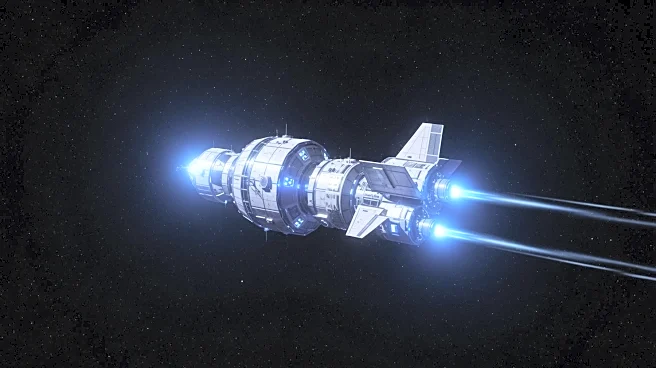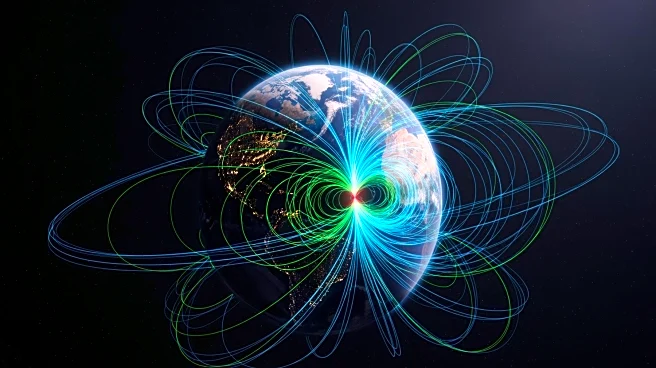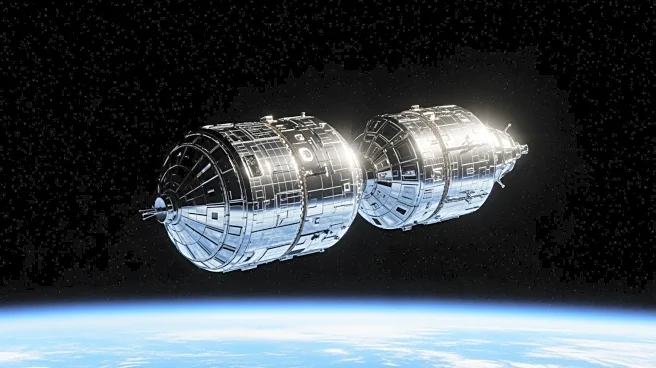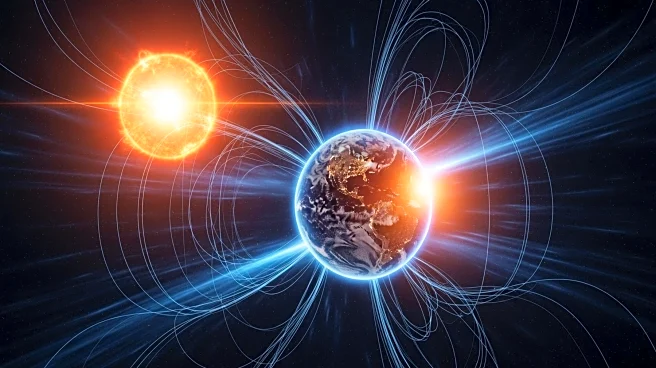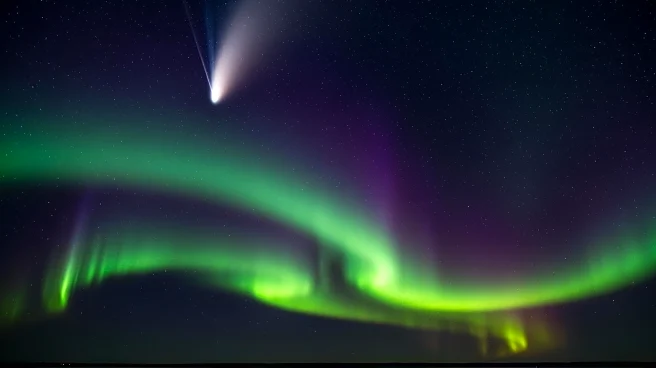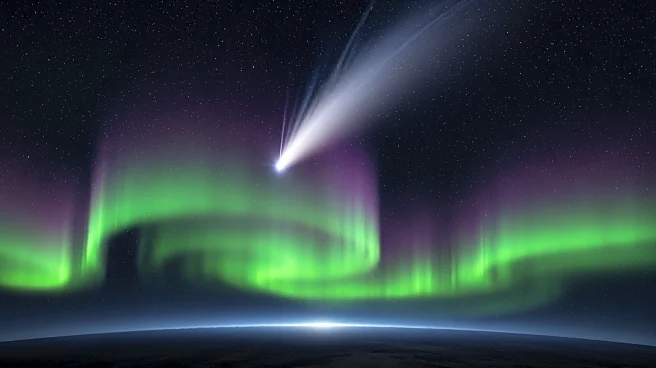What's Happening?
A stealth solar storm hit Earth on November 20, arriving without warning and potentially contributing to auroras visible at mid-latitudes. These stealth coronal mass ejections (CMEs) are difficult to detect, erupting quietly and disrupting solar wind
conditions. The event suggests the sun is entering the declining phase of its 11-year cycle, characterized by quieter solar activity. Scientists continue to study these phenomena to improve space weather forecasting and understand their impact on Earth's magnetic environment.
Why It's Important?
The occurrence of stealth solar storms highlights the challenges in space weather forecasting and the need for improved detection methods. Understanding these events is crucial for predicting their impact on Earth's magnetic field and mitigating potential disruptions to communication and navigation systems. The study of solar cycles and CMEs contributes to the broader field of space science, influencing technological advancements and preparedness for solar-related phenomena. This event underscores the importance of ongoing research in space weather and its implications for global infrastructure.



